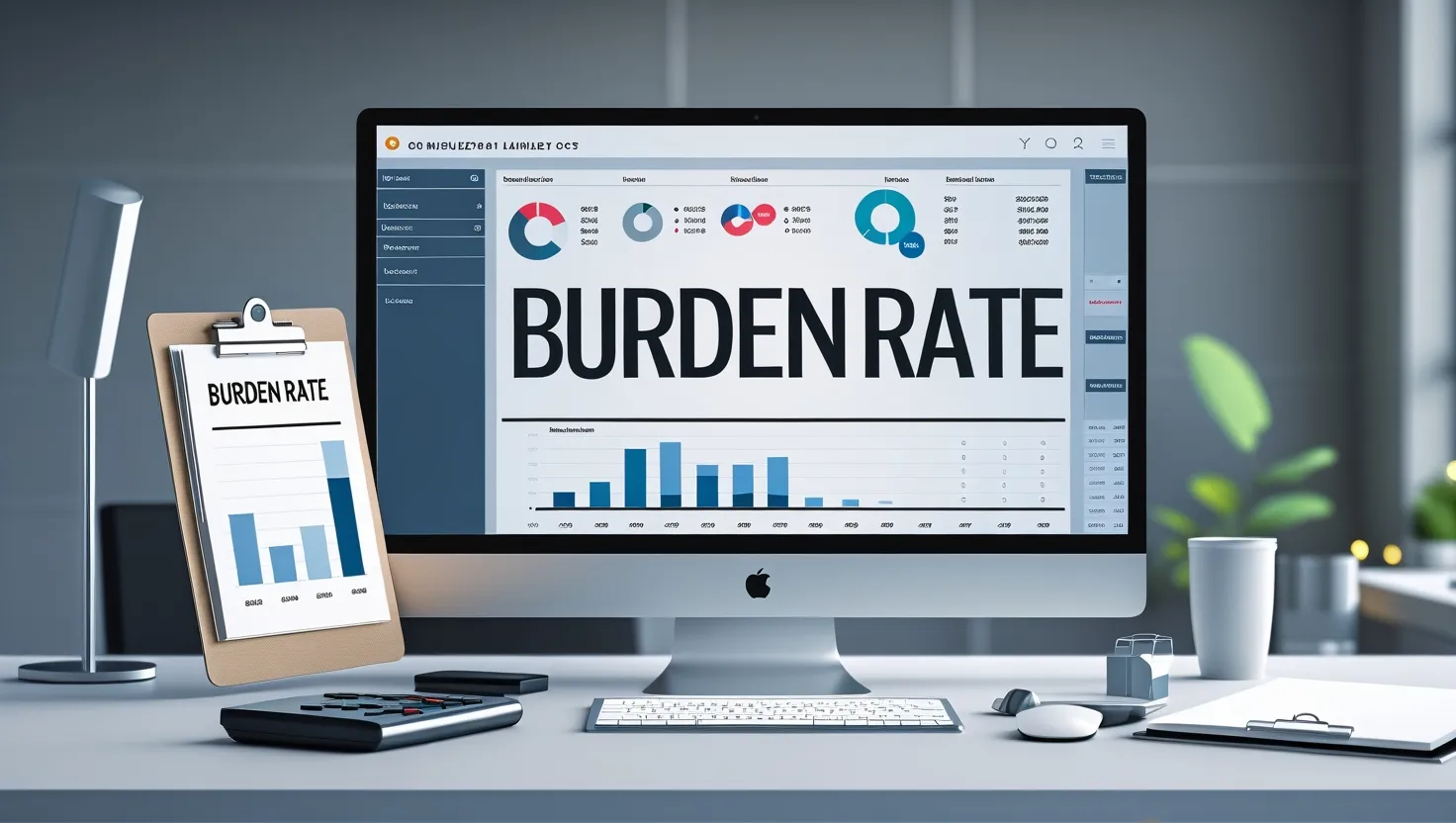
What Is a Burden Rate? #
The burden rate refers to the additional expenses a company incurs beyond an employee’s standard salary. This encompasses costs such as rent, utilities, equipment, insurance, and employee benefits. Essentially, it represents the expenses that enable your employees to perform their duties effectively.
For instance, if you employ someone with an annual salary of ₹50,000, your expenditure isn’t limited to just their salary. You must also cover costs for office space, water, electricity, insurance, and more. People collectively refer to these supplementary expenses as a burden.
In short, burden rate = extra costs that come with paying employees.
Why Is Burden Rate Important for Small Businesses? #
Understanding your burden rate assists you in:
- Establishing more accurate pricing for your offerings
- Identifying areas of excessive expenditure
- Comprehending the cost of each employee
- Making informed decisions to reduce expenses
- Maintaining competitiveness in the marketplace
If you ignore your burden rate, you might charge too little and lose money. But if you know your numbers, you can keep your business healthy and growing.
What Does The Burden Rate Include? #
Let’s discuss what enters a burden rate. Think of it as two parts:
Direct Labor Costs
This is the money you pay to workers for the work they do. It includes:
- Hourly pay or salary
- Overtime wages
This cost is easy to track.
Indirect Costs
These are the extra costs that support your staff. Even though your business does not pay the workers directly, it still compensates them. Examples include:
- Office rent
- Utility bills (electricity, water, etc.)
- Equipment repair
- Cleaning services
- Office supplies
- Taxes
- Health insurance
- Paid time off (leaves, vacation days)
- Insurance
- Training and development sessions
- Retirement or pension contributions
All these costs help your workers do their jobs, so they count as part of your labour expenses.
How to Calculate a Burden Rate (Step-by-Step) #
Here’s a quick way to find your burden rate:
- Add Direct Labor Costs: This is the total pay you give employees each year.
- Add Indirect Labor Costs: This includes rent, utilities, taxes, insurance, equipment, benefits, and other related costs.
- Use the Formula: Burden Rate = Indirect Costs ÷ Direct Labor Costs
Example:
- Direct Labor Costs = ₹10,00,000
- Indirect Costs = ₹2,50,000
Burden Rate = ₹2,50,000 ÷ ₹10,00,000 = 0.25 or 25%
So, for every ₹1 you spend on wages, you spend ₹0.25 more on other related costs.
Why Should Small Businesses Care? #
Knowing your burden rate is more than just a math trick. It can help your business grow. Here’s how:
- Assists in Accurate Pricing: The burden rate guarantees that pricing encompasses all expenses and yields profit.
- Reduces Costs: You may discover unnecessary expenses. Eliminating these can lead to monthly savings.
- Facilitates Planning: A comprehensive understanding of your total costs improves planning for recruitment or product introductions.
- Enhances Competitiveness: Your pricing can be both fair and strategic, enabling you to stay competitive with other businesses in your industry.
How Burden Rate Affects Pricing #
Pricing your product the right way is a huge part of running a business. If the price is too high, people may not buy. If it’s too low, you might lose money.
With the burden rate, you can find a balance.
Cost-Plus Pricing
You figure out what it costs to make a product (including labour and business expenses), and then you add your profit.
Example:
Cost = ₹100
Burden = ₹25
Profit = ₹25
Price = ₹150
This way, everything is covered, and you still earn money.
Competitive Pricing
You also need to look at what your competitors charge. If you understand your costs, you can compete while still making a profit.
Burden rate lets you know how low you can go without losing money.
Common Problems When Calculating Burden Rate #
Sometimes, businesses make mistakes. Here are a few things to watch out for:
- Employing incorrect figures
- Omitting certain expenses
- Delaying rate updates
- Failing to educate your team on cost comprehension
- Lacking appropriate software or tools
These mistakes can lead to bad decisions. But don’t worry—there are ways to fix them!
How to Solve These Problems #
- Keep Good Records
- Use Accounting Software
- Train Your Team
- Review Often
- Go Digital
FAQ’s: #
What is a burden rate?
The extra costs businesses pay beyond wages include rent, insurance, and utilities.
Why is the burden rate important?
It assists in establishing accurate pricing, reducing expenses, and comprehending actual employee costs.
Which costs does the burden rate include?
It includes rent, utilities, insurance, taxes, benefits, and training costs.
How do you calculate the burden rate?
Divide indirect costs by direct labour costs using the formula: Burden Rate = Indirect ÷ Direct Costs.
How does the burden rate affect pricing?
It ensures you price products to cover all costs and maintain healthy profits.
Conclusion #
The burden rate might sound a little tricky at first. But once you understand it, it can help your business in significant and impactful ways.
You’ll know the true cost of having employees. You’ll price things right. And you’ll stay on top of your money.
Use Vyapar App to handle billing, stock & payments all in one place.
Make bills, track stock, and handle payments in one place.
